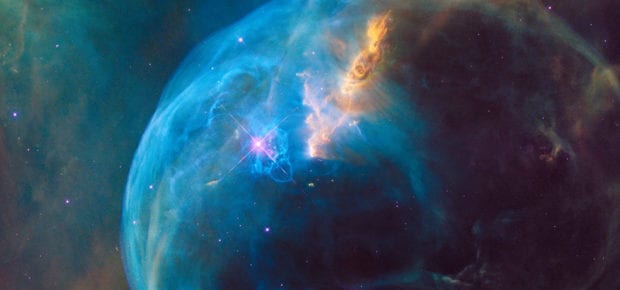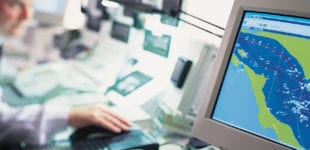August 15, 2019
Mankind’s desire to explore has resulted in some of our greatest technological accomplishments, and few pursuits have produced a larger impact than our exploration of space.
Whether impressive ends in themselves, or for their spillover effects into the consumer technologies we use today, the innovations that were part of the following missions are deserving of recognition.
Simulations and Integrated Circuits
The world has been abuzz for the past couple of months remembering the 50th anniversary of the Apollo 11 moon landing. For the purposes of this article, two key things stand out: simulation software and integrated circuits.
While simulation today is standard for testing aircraft before they’re built, that wasn’t the case with the early Apollo missions. IEEE Life Fellow George Schmidt was on the Apollo technical staff: “We didn’t have the computer tools at the beginning to do simulations of systems – it was all pencil and paper, and the proof in the pudding was to build some prototype hardware and see what happened.
“What’s happened since then, and Apollo was one of the instigators of this,” says Schmidt, “was that simulation became the real design tool for engineers. With digital simulation, you could vary the parameters of the system design that you were using and very rapidly hone in on something that seemed to work.”
Another technology accelerated by the Apollo missions was the integrated circuit. Schmidt again: “When we first started, the notion was that the onboard computer for the Apollo command module and lunar module would be transistor-based. But it was rapidly determined that if you tried to build a computer that had all the programs and controls, it would take up the whole spacecraft.
“In those days, integrated circuits had just been invented, and were undergoing testing. There was a major decision made to use integrated circuits, which would cut down the requirements for space to one cubic foot of computer in the command module.” The engineers were successful, and today, integrated circuits are ubiquitous.
Radar Astronomy
Though it has much less name recognition than Apollo, Project Diana was a pivotal program in its own right. Constructed as an array of antennae at Camp Evans in New Jersey, it did something in 1946 that had never been done before. According to a recent article in The Institute, Project Diana “sent a radar pulse toward the moon as it rose above the horizon. Just 2.5 seconds later, the signal had bounced off the lunar surface, its echo appearing clearly on an oscilloscope.”
Project Diana was dedicated as an IEEE Milestone this past May for initiating the fields of radar astronomy and space communications. What is radar astronomy, exactly? “The basic technique of bouncing radio signals off distant bodies that was developed for the project has been used to gather data about the geological and dynamic properties of many of the solar system’s planets and other heavenly bodies,” according to The Institute. “Additionally, the technique has been used to determine the distance from the earth to the sun and the scale of the solar system itself.” Pretty transformative results for a project over 70 years ago.
Breaking Distance Records
While no one could’ve predicted how far or for how long Voyager 1 would last when it was launched in 1973, it has become the benchmark for distance in man-made spacecraft. As of this writing, Voyager 1 is a whopping 21.9 million km away from Earth. More on its history can be found here, which contains this defining quote: “Voyager 1 is now the most distant man-made object in the universe.”
After 40 years, NASA says it continues to communicate with the spacecraft daily.
This is, of course, only a brief sampling of space exploration-related technologies and the broad effects they’ve had. To learn more about their impact and where things are headed in the future, take a look at our initiative Space Exploration, Technology and Our Lives.






 Meaningful Momentum or Running in Place?
Meaningful Momentum or Running in Place? AI Through Our Ages
AI Through Our Ages Liquid Infrastructure: Our Planet's Most Precious Resource
Liquid Infrastructure: Our Planet's Most Precious Resource The Impact of Technology in 2025
The Impact of Technology in 2025 Quantum and AI: Safeguards or Threats to Cybersecurity?
Quantum and AI: Safeguards or Threats to Cybersecurity? Why AI Can't Live Without Us
Why AI Can't Live Without Us Bits, Bytes, Buildings and Bridges: Digital-Driven Infrastructure
Bits, Bytes, Buildings and Bridges: Digital-Driven Infrastructure Impact of Technology in 2024
Impact of Technology in 2024 Emerging AI Cybersecurity Challenges and Solutions
Emerging AI Cybersecurity Challenges and Solutions The Skies are Unlimited
The Skies are Unlimited Smart Cities 2030: How Tech is Reshaping Urbanscapes
Smart Cities 2030: How Tech is Reshaping Urbanscapes Impact of Technology 2023
Impact of Technology 2023 Cybersecurity for Life-Changing Innovations
Cybersecurity for Life-Changing Innovations Smarter Wearables Healthier Life
Smarter Wearables Healthier Life Infrastructure In Motion
Infrastructure In Motion The Impact of Tech in 2022 and Beyond
The Impact of Tech in 2022 and Beyond Cybersecurity, Technology and Protecting Our World
Cybersecurity, Technology and Protecting Our World How Technology Helps us Understand Our Health and Wellness
How Technology Helps us Understand Our Health and Wellness The Resilience of Humanity
The Resilience of Humanity Harnessing and Sustaining our Natural Resources
Harnessing and Sustaining our Natural Resources Creating Healthy Spaces Through Technology
Creating Healthy Spaces Through Technology Exceptional Infrastructure Challenges, Technology and Humanity
Exceptional Infrastructure Challenges, Technology and Humanity The Global Impact of IEEE's 802 Standards
The Global Impact of IEEE's 802 Standards Scenes of our Cyber Lives: The Security Threats and Technology Solutions Protecting Us
Scenes of our Cyber Lives: The Security Threats and Technology Solutions Protecting Us How Millennial Parents are Embracing Health and Wellness Technologies for Their Generation Alpha Kids
How Millennial Parents are Embracing Health and Wellness Technologies for Their Generation Alpha Kids Space Exploration, Technology and Our Lives
Space Exploration, Technology and Our Lives Global Innovation and the Environment
Global Innovation and the Environment How Technology, Privacy and Security are Changing Each Other (And Us)
How Technology, Privacy and Security are Changing Each Other (And Us) Find us in booth 31506, LVCC South Hall 3 and experience the Technology Moon Walk
Find us in booth 31506, LVCC South Hall 3 and experience the Technology Moon Walk Virtual and Mixed Reality
Virtual and Mixed Reality How Robots are Improving our Health
How Robots are Improving our Health IEEE Experts and the Robots They are Teaching
IEEE Experts and the Robots They are Teaching See how millennial parents around the world see AI impacting the lives of their tech-infused offspring
See how millennial parents around the world see AI impacting the lives of their tech-infused offspring Take the journey from farm to table and learn how IoT will help us reach the rising demand for food production
Take the journey from farm to table and learn how IoT will help us reach the rising demand for food production Watch technical experts discuss the latest cyber threats
Watch technical experts discuss the latest cyber threats Explore how researchers, teachers, explorers, healthcare and medical professionals use immersive technologies
Explore how researchers, teachers, explorers, healthcare and medical professionals use immersive technologies Follow the timeline to see how Generation AI will be impacted by technology
Follow the timeline to see how Generation AI will be impacted by technology Learn how your IoT data can be used by experiencing a day in a connected life
Learn how your IoT data can be used by experiencing a day in a connected life Listen to technical experts discuss the biggest security threats today
Listen to technical experts discuss the biggest security threats today See how tech has influenced and evolved with the Games
See how tech has influenced and evolved with the Games Enter our virtual home to explore the IoT (Internet of Things) technologies
Enter our virtual home to explore the IoT (Internet of Things) technologies Explore an interactive map showcasing exciting innovations in robotics
Explore an interactive map showcasing exciting innovations in robotics Interactively explore A.I. in recent Hollywood movies
Interactively explore A.I. in recent Hollywood movies Get immersed in technologies that will improve patients' lives
Get immersed in technologies that will improve patients' lives